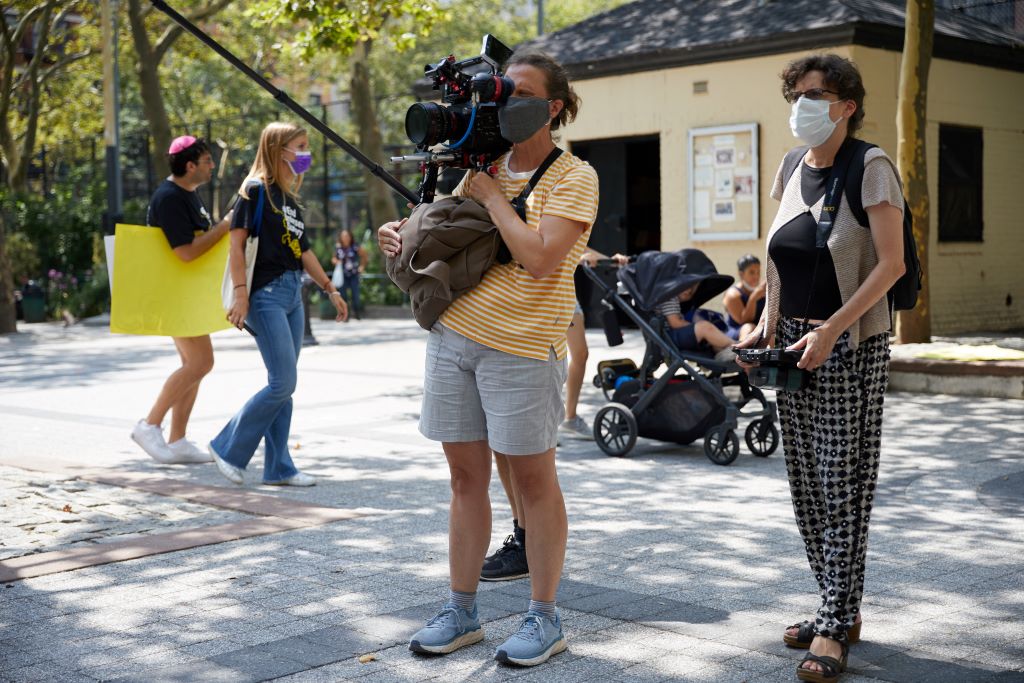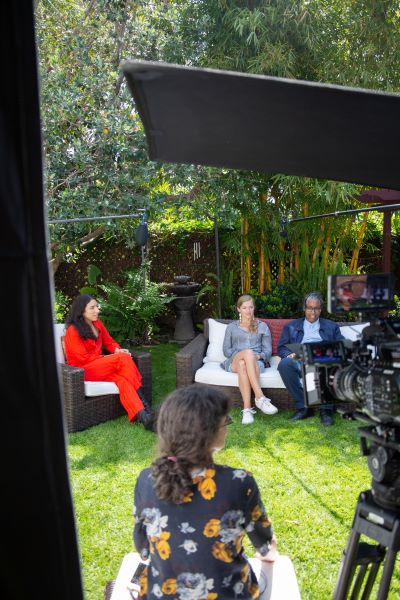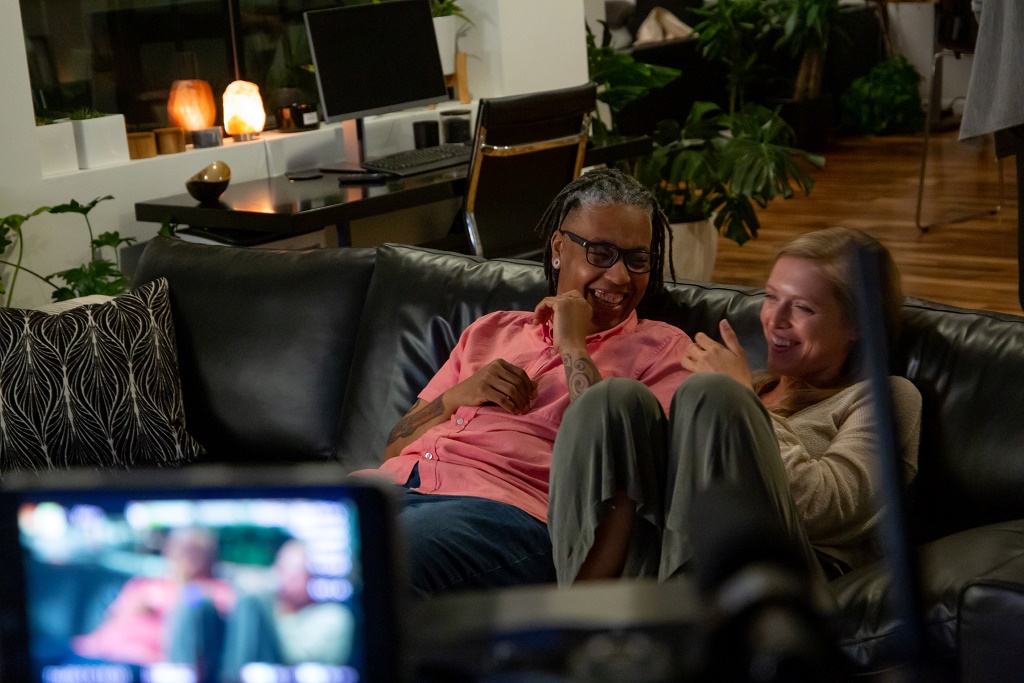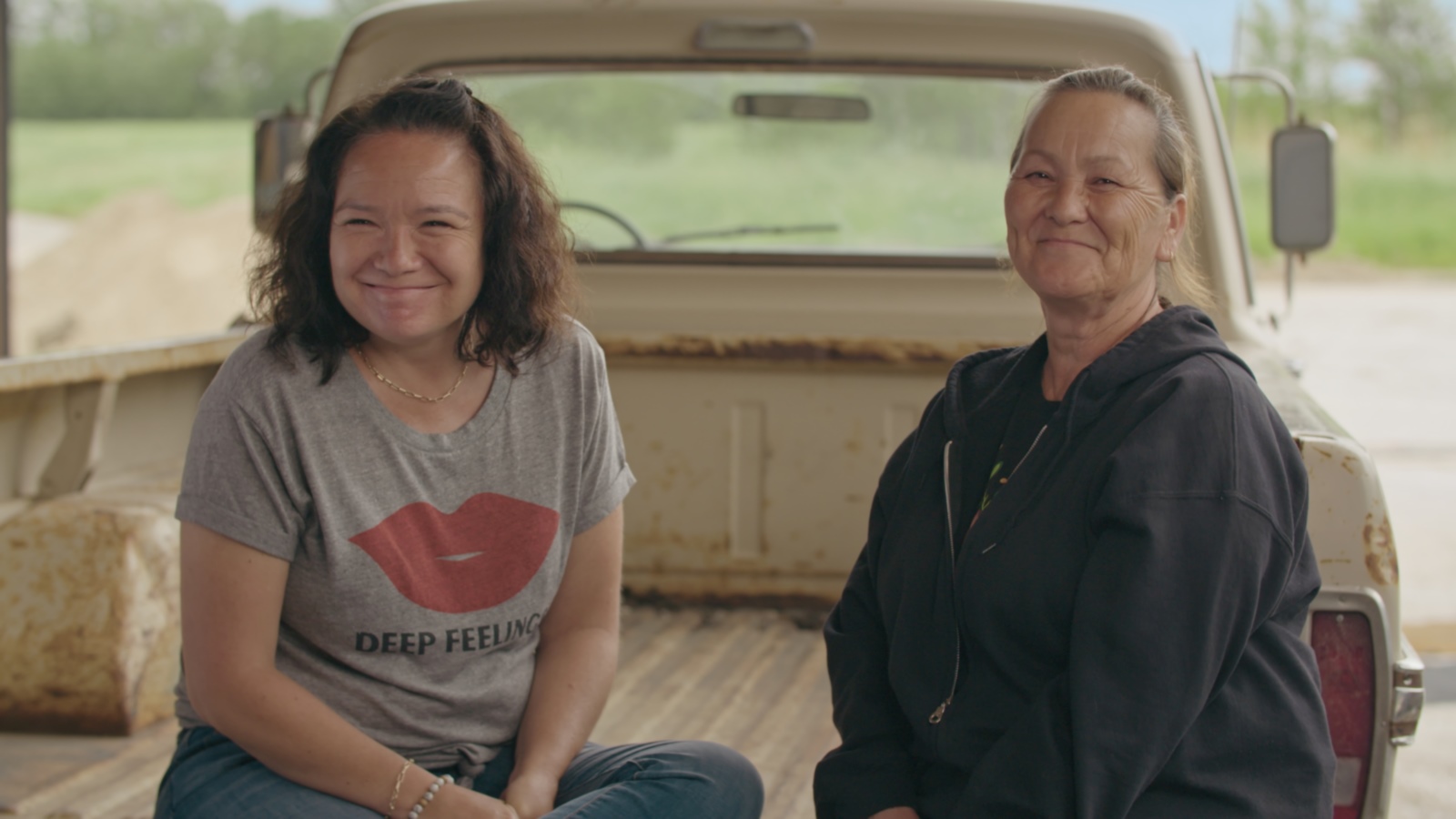“It feels like the intersex rights movement is the next frontier,” says Every Body director Julie Cohen. “If you had done this film a period of time ago, everyone would be in shadow and disguising their voices, which would not have been as good a message. What’s so beautiful about the intersex rights activists today is that they’re coming out as themselves.”
Cohen, the Oscar-nominated director of RBG and Julia, brings her signature eye for strong characters and sense of play to uplift intersex experiences. The film lets political consultant Alicia Weigel, academic Sean Saifa Wall, and actor/screenwriter River Gallo, whose short film Ponyboi is the first narrative work by and starring an intersex person, bring a lesser known letter of the 2SLGBTQQIA+ alphabet out of the soup bowl and into the spotlight. Every Body counters misconceptions about people born with biological traits both male and female. The film helps shatter the notion that gender is a simple binary construct.
Every Body intersects the stories of Alicia, Saifa, and River with past and present tales of the fight for bodily autonomy. Cohen introduces the tragic case study of Winnipeg-born David Reimer, for example, who became the unwitting subject for psychologist Dr. John Money in an experiment that considered gender as a learned experience. Similarly, the film follows Alicia, Saifa, and River as they amplify intersex voices amid the USA’s politically volatile climate and use their experiences to defend the rights of others, notably transgender people who face arguments that hinge upon the gender binary. Every Body puts human faces on a growing movement. Moreover, it’s a welcome portrait of queer joy for a community that needs support now more than ever.
POV spoke with Cohen about her process of making Every Body, navigating stories of trauma, and bringing the stars’ stories to the big screen.
POV: Pat Mullen
JC: Julie Cohen
This interview has been edited for brevity and clarity.
POV: Every Body starts on such a fun note with the montage of gender reveals from social media. That’s become such a crazy phenomenon with everybody basically making pipe bombs for Instagram. What inspired that opening?
JC: The real substantive beginning of the film comes with the soundbite that immediately follows that with Saifa saying, “We live in a society that’s so binary. So, as an intersex person, where do I belong?” I wanted to lead us to that point and the best way to do it was with the gender reveal videos. Fortunately, thanks to the internet, there is no shortage. I can tell you of unbelievably amusing gender reveal footage that myself and Kelly Kendrick, our editor, got to put together into that fun, telling open. I wanted to signal to the audience that they think they’re seeing a very serious movie about a serious subject, but, actually, we’re here to have some fun too.
Also, as someone who had gender reveals on my Google alert for a long time, I have to add that gender reveal parties are causing a lot of wildfires. If you feel that you must do a gender reveal party, please stay away from the explosives in dry fields!

POV: I understand that you encountered David Reimer’s story when you worked at Dateline and again when you were going through the NBC archives looking for stories for feature documentaries. Why didn’t you just make a film about David?
JC: Everyone has passed away and that story in its own is so devastatingly, harrowingly, depressing. I couldn’t see how you would make a film just about that story that anyone would want to go into a theatre and watch. That led me to look into the modern day implications. It was actually watching not the Dateline story itself, but the field tapes from it: There’s a soundbite that we used in the film that wasn’t used in the original Dateline story. David’s talking about how his reason to come forward was that he understood that the misrepresentation of his case was being used to justify surgeries on intersex babies. He didn’t like that. He felt like it was his duty to speak out and protect other people.
Hearing those words and knowing…that it was so important to him to speak out and help intersex people led me to look into what was going on with intersex rights in the modern age. There hasn’t been much for all the media attention that has deservedly gone to the struggle for trans rights—and, of course, that wasn’t true 20 years ago.
POV: How was the experience of watching the footage of David’s story with River, Saifa, and Alicia?
JC: It was difficult and uncomfortable. In some ways, that’s a device within the film to connect the two stories. I did not show them everything that you see in the film. I showed them a few soundbites. If you see them reacting to footage, that’s because we showed it to them. But we also weave in some things to tell you the story. For the things that felt the most traumatic, it would be exploitative to have their faces on camera while they’re watching that, so you see more of it in the film than we showed them in a few clips. I think anyone who sees David Reimer can feel his pain, but I think Alicia, Saifa, and River felt the pain even more deeply. You could feel that in the room and you can feel it in the film.
POV: Each character’s story involves a level of trauma. How did you revisit those stories in a way that didn’t re-traumatize them, or even audience members who might have gone through something similar?

JC: The first interview that I did with each of the main stars was like a getting-to-know-each-other process. I was going to ask them the deeply personal stories later. We used no artificial light—I just wanted a natural light. I didn’t want them to feel like they were being interrogated. The crew set everything up, pulled focus, and then went to another room and I was the person standing behind the camera, so it was more intimate and personal. Also, all three of them are activists on this issue. They have so much experience in their activism, but also with their medical histories and having to show their bodies and talk about this personal stuff all the time. In each case, they just launched into these stories before I was even really asking.
I also made a conscious decision to only have people who had talked publicly about their bodies a fair amount in the past star in the film. I didn’t want their first experience talking publicly about this very private information as part of our film. That would add a weight that I wasn’t ready to take. All three of them are pretty strong people and having already worked through their trauma and have a fair amount of maturity made it easy.
Your question about the audience is an interesting one. At our early screenings, we had a lot of intersex people find the film and just show up for it. There is huge awareness. A lot of people are reaching out to me on social media from all over the country, England, Canada. Seeing intersex people represented in a positive light is something that there’s more of a hunger for than I had thought. At our premiere at Tribeca, a fair number of intersex people showed up and they applauded at moments that I hadn’t thought of as moments for applause, like when the shot of Saifa’s naked body appeared on the screen, people cheered for it. There’s something really beautiful about that, but totally unanticipated.
POV: What is that process for constructing a story when you’re working with multiple characters? When you’re telling the story of one character, like Ruth Bader Ginsberg or Julia Child, you can follow a more conventional biographical path, but how do you decide where the story takes you with multiple people?
JC: You know you’re not going down every avenue with every “character”—that’s a controversial word in the doc world—but in terms of how they’re appearing in the film, they really are the characters of the film. For example, I wanted to have somebody go through their medical records with me, but I didn’t do that with all three of them. We picked Saifa to be the medical records person because our archival producer was able to find a number of those records in different locations. And he had a form where someone had checked off “ambiguous” on his birth records, crossed it off, and then checked “female.”
I also wanted somebody’s parent to be in the story with them, and River’s mom turned out to be so warm and incredible. Then there was Alicia’s dating life—you’re using different people to represent different parts of the story with the hope that, as you’re watching it, everything comes together for you. There were some parts where their experiences echoed one another, like the secrecy part of things.
POV: It’s funny: I actually starting using the word “character” after seeing the movie Subject. I’ve tried to make a point of not using the word “subject.” It’s tricky!
JC: The popular word in documentaries now is “participant.” I’m not loving that one, either, because it suggests that the process is more democratic than it is. It’s not like me, River, Saifa, and Alicia are all together making this film. In our credits, we said “starring.” We went with the word “stars,” because, in this case, that’s what it feels like they are.

POV: That’s fair. For “participant,” I think of someone like Nan Goldin in All the Beauty and the Bloodshed where she has a creative role in the film. You did your last four films with Betsy West, so how was it going back to flying solo? Your first few features you directed on your own and then you have recent body of work that was co-directed.
JC: There are times when it’s great to work through everything with another director. There are other times where it’s freeing to be able to take some chances, so you have to ask if you want to put someone else in the position of taking those chances too. I started working on this film in 2018, around the time we were finishing RBG. Betsy and I had done the one film, but we hadn’t done the other films. There was a period of about three years where it wasn’t really clear whether this project was going forward or not. I was working on it on my own and, for the most part, developing it without pay. It really wasn’t something to be bringing someone else into. By the time there was funding to go forward, I had a strong sense of how I wanted to approach it, so it made sense to do it as a solo project.
POV: Were there ways that the Pauli Murray doc fed onto this story? It’s interesting how you were looking at a non-binary character with Pauli Murray and questions of gender identities at the same time.
JC: When I had worked at Dateline, I dealt with gender issues a few times as well. Unconventional gender stories are one type of stories that are really fascinating to a lot of audiences, and to me, especially when you set them against the 1950s’ and ’60s’ mentality. I grew up with a gay brother who was the guiding force for the first 25 years of my life. Seeing what that was like in the ’60s and understanding how deeply society’s views changed gave me some sense of optimism that we can change our thinking also about trans people, non-binary people, and intersex people.
POV: It’s encouraging to see a distributor like Focus taking on a film like Every Body right now as a theatrical documentary when there’s so much apprehension about the doc marketplace. Do you feel a lot of pressure riding on this film?
JC: I try not to think about the pressure. Focus stepped into this film in early 2021. I was surprised and thrilled that they agreed to do it. But if you look at their whole slate of films, they have such a wide scope. They try things that they think are going to be cool without a lot of mathematical algorithms that are out there. That’s incredibly refreshing in this day and age. I’m thrilled that they’re putting their know-how behind the production and distribution of this film, and I’m thrilled that they’re putting it in theatres. Having shown the film at Tribeca and at Frameline, and seeing what it’s like for a group of people to come together and watch this film, I think it’s such a good movie for the theatrical experience. In this day and age, it’s pretty unusual for a documentary to have a real theatrical release.













